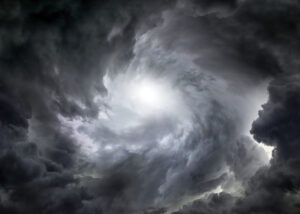Let’s face it, when we want to know what to wear we flip on the TV, or swipe open our phones and check the latest weather update. Predicting weather through cloud formations is pretty much a lost art. I’m sure we have all looked at the sky at one point or another and found a fluffy bunny rabbit, or unicorn, but have you ever looked behind their shape?
Not many of us do. In fact, not many of us can differentiate between types of clouds, which could help us predict the coming forecast. Fortunately, being able to predict the weather is easier than one may think. Take a look at the categorizations below for some information to get you started.
Categorization:
Clouds can easily be broken into four categories; high clouds, middle clouds, low clouds and clouds with vertical growth.
Clouds are also identified by shape. Not so much ice cream cones, or dinosaurs, but more so a heap of clouds often referred to as cumulus clouds. Stratus refers to clouds that are long and streaky.
And nimbus refers to the shape of “rain” because we all know what rain looks like.
High clouds
 High clouds form at 16,000 – 43,000 feet. They are the clouds that you encounter on the top of really high mountains, or on an airplane.
High clouds form at 16,000 – 43,000 feet. They are the clouds that you encounter on the top of really high mountains, or on an airplane.
Due to the extreme conditions at which they form, they tend to be comprised primarily of ice crystals. High clouds do not block sunlight. High clouds include:
Cirrus, Cirrostratus, Cirrocumulus.
-
Cirrus: Cirrus clouds are white wispy clouds that stretch across the sky. Cirrus clouds indicate fair weather in the immediate future, but they can also be an indication of a change in weather patterns within the next 24 hours. By watching their movement and the direction that the streaks are pointed can give you a sense of which direction the upcoming weather front is moving.
-
Cirrostratus: Cirrostratus tend to be sheet-like and cover the whole sky. You can see the sun or moon through them. Their presence usually indicates moist weather within the next 12 – 24 hours.
-
Cirrocumulus: Clouds tend to be large groupings of white streaks that seem neatly aligned. In most climates, these mean fair weather for the near future. However, in the tropics, these clouds may indicate an approaching tropical storm or hurricane.
Middle Clouds

Middle clouds form at 6,500 to 23,000 feet. They are comprised of water, and, if cold enough, ice. Middle clouds often block sunlight. Middle clouds consist of: Altostratus, Altocumulus
-
Altostratus: Altostratus are grey and/or blue clouds that cover the whole sky. They tend to indicate a storm some time in the very near future since they usually precede inclement weather.
-
Altocumulus: Altocumulus are grayish-white clouds that blanket the entire sky. They look like large fluffy sheets with a large contrast between light and dark. Sun does not pass through them. If you see them in the morning, prepare for a thunderstorm in the afternoon.
Low Clouds
Low clouds form below 6,500 feet. These clouds are the ones that like to hang-around just above tall buildings. These clouds are mainly comprised of water but can contain snow if the weather gets cold enough. Low clouds block sunlight and can bring rain and wind. Low clouds include: Stratus, Stratocumulus, Nimbostratus
-
Stratus: Stratus are low-lying solid clouds that are often formed when fog lifts off the ground. They obviously look like an elevated fog. Often they bring drizzle or light snow.
-
Stratocumulus: Stratocumulus are low-lying bumpy and grey clouds. They do not cover the entire sky, do not cause rain.
-
Nimbostratus: Nimbostratus is your standard rain cloud. It is a large flat sheet of grey cloud. If you see it, chances are it’s raining outside.
Vertical mobility:
 These are clouds which maintain vertical growth. Their base usually hangs pretty low, around 5000 feet with their top stretching over 50, 000 feet. Clouds in this category include: Cumulus, Cumulonimbus
These are clouds which maintain vertical growth. Their base usually hangs pretty low, around 5000 feet with their top stretching over 50, 000 feet. Clouds in this category include: Cumulus, Cumulonimbus
-
Cumulus: Stereotypical white fluffy clouds. They indicate fair weather. However, you need to keep an eye on these clouds because any vertical growth can indicate the start of a large storm.
-
Cumulonimbus: Cumulonimbus are cumulus clouds that have grown vertically into an anvil-like shape. It tends to point in the direction the storm is moving. These clouds bring most dangerous weather like; rain, lightning, hail and tornadoes.
So the next time you want to know what kind of weather to prepare for take a look at the sky. Determine what shape, color, texture, direction, and opaqueness, the clouds are. From there you will be able to predict what kind of weather is heading your way.
Written by:
Sources:
http://www.instructables.com/id/Predicting-Weather-with-Clouds

